Home Cleaning Mistakes – we all make them! Let’s be honest, who hasn’t accidentally used the wrong cleaner on a delicate surface or skipped a crucial step in their cleaning routine? I know I have! Cleaning our homes is a task as old as time, dating back to ancient civilizations where rudimentary tools and natural ingredients were used to maintain hygiene and order. While our methods have evolved, the goal remains the same: a clean and healthy living space.
But in our fast-paced modern lives, we often rush through cleaning, leading to unintentional errors that can damage our belongings, waste time, or even pose health risks. That’s why I’m so excited to share these DIY cleaning tricks and hacks with you! This article is your guide to avoiding common home cleaning mistakes and achieving a sparkling clean home with ease. We’ll dive into simple yet effective solutions that will save you time, money, and frustration. Get ready to transform your cleaning routine and create a healthier, happier home!
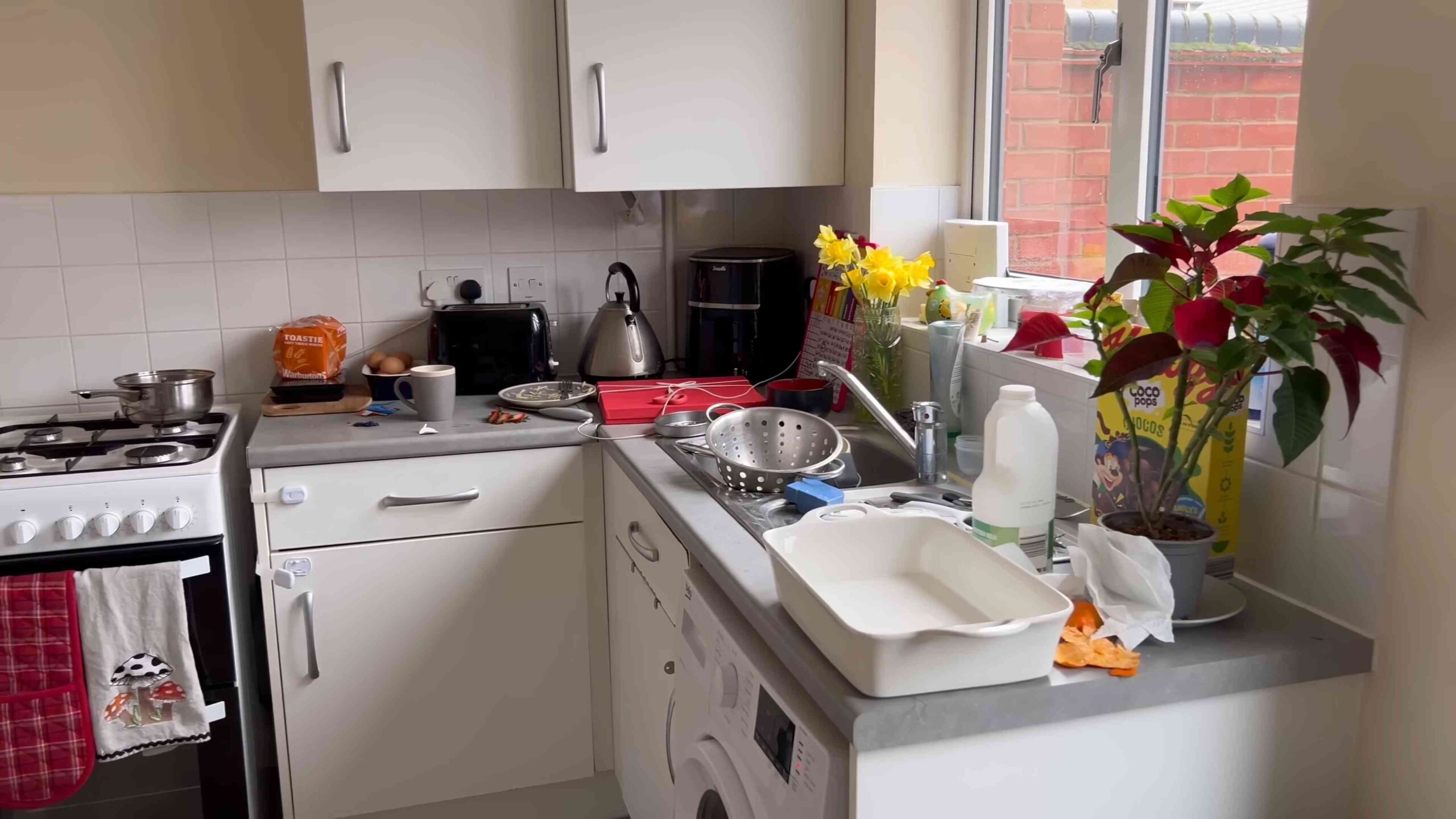
DIY Home Cleaning Hacks: Avoiding Common Mistakes for a Sparkling Clean Home
Okay, let’s dive into some common home cleaning mistakes we all make (yes, even me!) and how to fix them. I’m going to share my tried-and-true methods for achieving a truly clean and healthy home, avoiding those pitfalls that can actually make things worse or just plain waste your time.
Mistake 1: Using the Same Cloth Everywhere
This is a big one! Think about it: you wipe down your toilet and then use the same cloth on your kitchen counter? Yikes! We’re just spreading germs around.
The Fix: Color-Coded Cleaning Cloths
This is a game-changer. Trust me.
* What you’ll need: A pack of microfiber cloths in different colors (at least 3-4 colors), a storage container for clean cloths, and a laundry basket specifically for dirty cloths.
* How to do it:
* Assign a color to each area:
* Blue: Bathrooms (toilet, sink, shower)
* Green: Kitchen (counters, stovetop, sink)
* Yellow: Dusting and general cleaning (furniture, windows)
* Red: High-germ areas (door knobs, light switches)
* Store your clean cloths in a designated container, organized by color.
* After using a cloth, immediately toss it into the dirty laundry basket.
* Wash your cleaning cloths separately from your regular laundry, using hot water and a disinfectant laundry detergent.
Step-by-Step Instructions:
1. Purchase your microfiber cloths. I recommend getting a pack with at least four different colors. Microfiber is key because it’s super absorbent and traps dirt and grime effectively.
2. Designate colors for each area. This is crucial! Write it down somewhere you’ll remember, like on a label for your storage container.
3. Store your clean cloths. Keep them organized by color in a container that’s easily accessible. I use a clear plastic bin with dividers.
4. Use and toss! After using a cloth, don’t even think about reusing it without washing. Straight into the laundry basket it goes!
5. Wash separately. This is important to prevent cross-contamination. Wash your cleaning cloths in hot water with a disinfectant laundry detergent. You can also add a cup of white vinegar to the wash for extra cleaning power.
6. Dry thoroughly. Make sure your cloths are completely dry before storing them to prevent mildew growth.
Mistake 2: Not Letting Cleaning Products Sit Long Enough
We’re all guilty of this. We spray a cleaner and immediately wipe it off, thinking we’ve done the job. But most cleaning products need time to actually work!
The Fix: Read the Instructions and Be Patient
* What you’ll need: Your favorite cleaning products, a timer (your phone works great!), and a little bit of patience.
* How to do it:
* Read the instructions on your cleaning product label. Pay attention to the recommended dwell time (how long the product needs to sit).
* Spray the cleaner onto the surface you want to clean.
* Set a timer for the recommended dwell time.
* Resist the urge to wipe it off early!
* Once the timer goes off, wipe the surface clean.
Step-by-Step Instructions:
1. Grab your cleaning product. Whether it’s a bathroom cleaner, a kitchen degreaser, or a disinfectant spray, make sure you have it handy.
2. Read the label carefully. This is the most important step! Look for the “dwell time” or “contact time.” This is how long the product needs to sit on the surface to effectively kill germs or dissolve grime.
3. Spray the surface. Apply the cleaner evenly to the area you want to clean.
4. Set a timer. Use your phone, a kitchen timer, or whatever you have available. Don’t skip this step!
5. Wait patiently. This is the hardest part! Resist the urge to wipe it off early. Let the cleaner do its job.
6. Wipe clean. Once the timer goes off, wipe the surface clean with a clean cloth or sponge.
7. Rinse if necessary. Some cleaners may require rinsing with water after wiping. Check the label for instructions.
Mistake 3: Overlooking High-Touch Surfaces
We often focus on the big cleaning tasks, like vacuuming and mopping, but we forget about the surfaces we touch the most, like doorknobs, light switches, and remote controls. These are germ magnets!
The Fix: Regular Disinfecting of High-Touch Surfaces
* What you’ll need: Disinfectant wipes or spray, a clean cloth.
* How to do it:
* Identify the high-touch surfaces in your home (doorknobs, light switches, remote controls, phone screens, keyboards, faucet handles, etc.).
* Wipe down these surfaces with disinfectant wipes or spray.
* Let the disinfectant sit for the recommended dwell time (check the product label).
* Wipe clean with a clean cloth.
* Repeat this process regularly, especially during cold and flu season.
Step-by-Step Instructions:
1. Identify your high-touch surfaces. Take a walk around your house and make a mental note of all the surfaces you and your family touch frequently.
2. Grab your disinfectant. You can use disinfectant wipes or a spray. If using a spray, make sure you have a clean cloth handy.
3. Wipe or spray the surfaces. If using wipes, simply wipe down the surfaces. If using a spray, spray the surface and then wipe with a clean cloth.
4. Let it sit. Again, check the product label for the recommended dwell time. This is crucial for killing germs effectively.
5. Wipe clean (if necessary). Some disinfectants don’t require wiping, but others do. Check the label for instructions.
6. Repeat regularly. Aim to disinfect high-touch surfaces at least once a day, or more frequently during cold and flu season.
Mistake 4: Using Too Much Cleaning Product
More isn’t always better! Using too much cleaning product can leave behind a sticky residue that attracts dirt and grime. It’s also wasteful and can be harmful to the environment.
The Fix: Follow the Instructions and Use the Right Amount
* What you’ll need: Your cleaning products, measuring cups or spoons (if necessary).
* How to do it:
* Read the instructions on your cleaning product label.
* Use the recommended amount of product.
* If the instructions say to dilute the product with water, follow the dilution instructions carefully.
* Avoid using excessive amounts of product.
Step-by-Step Instructions:
1. Read the label. I know, I sound like a broken record, but it’s so important! Pay attention to the recommended dosage.
2. Measure carefully. If the instructions call for a specific amount of product, use measuring cups or spoons to ensure you’re using the correct amount.
3. Dilute properly. If the product needs to be diluted with water, follow the instructions carefully. Using too much product can actually make it less effective.
4. Less is more. Remember, a little goes a long way. You can always add more product if needed, but it’s harder to remove excess product.
Mistake 5: Neglecting Your Cleaning Tools
Your cleaning tools can get dirty too! If you’re using a dirty mop or a grimy vacuum cleaner, you’re just spreading dirt around.
The Fix: Clean Your Cleaning Tools Regularly
* What you’ll need: Hot water, soap, disinfectant, vacuum cleaner maintenance tools (brush, scissors).
* How to do it:
* Mops: Rinse your mop head thoroughly after each use. Wash it in hot water with soap and disinfectant at least once a week. Replace your mop head every 2-3 months.
* Sponges: Rinse your sponges thoroughly after each use. Microwave them for 2 minutes to kill bacteria. Replace your sponges every 1-2 weeks.
* Vacuum Cleaners: Empty your vacuum cleaner bag or canister regularly. Clean the brush roll to remove hair and debris. Replace the filters as recommended by the manufacturer.
* Cleaning Cloths: Wash your cleaning cloths separately from your regular laundry, using hot water and a disinfectant laundry detergent.
Step-by-Step Instructions:
Cleaning Your Mop
1. Rinse after each use. After mopping, rinse the mop
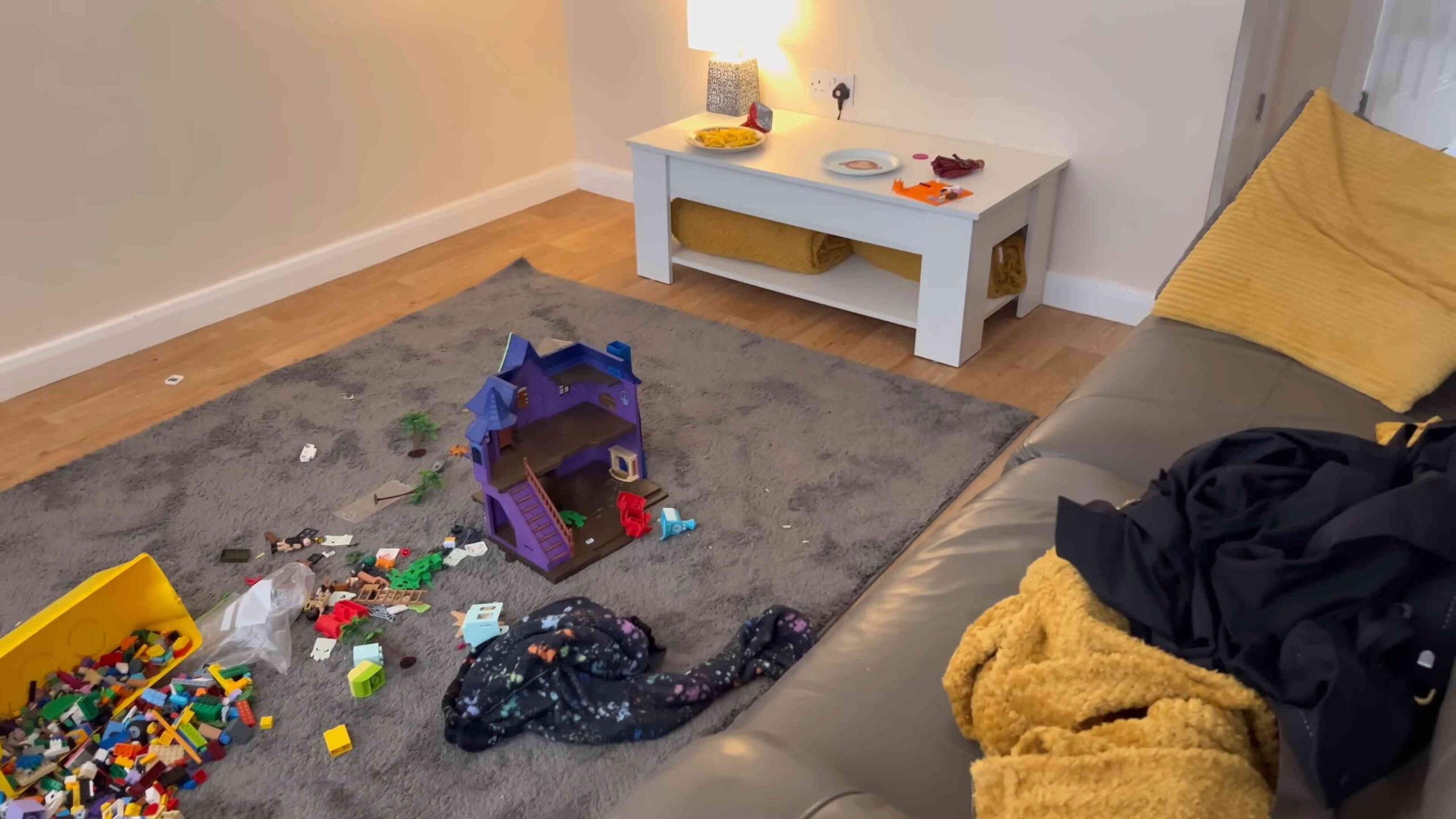
Conclusion
So, there you have it! Armed with the knowledge of these common home cleaning mistakes and, more importantly, how to avoid them, you’re well on your way to a cleaner, healthier, and happier home. This isn’t just about aesthetics; it’s about creating a living space that truly supports your well-being. Think of it as an investment in your peace of mind.
The beauty of avoiding these pitfalls is that it’s not about spending more time cleaning, but about cleaning smarter. By understanding the science behind cleaning and adopting the right techniques, you can achieve better results with less effort. No more endless scrubbing or re-cleaning the same spots!
Remember, the key is consistency and awareness. Start by focusing on one or two areas where you know you’ve been making mistakes. Maybe it’s the way you’ve been cleaning your kitchen counters, or perhaps it’s the products you’ve been using on your hardwood floors. Make a conscious effort to change your approach, and you’ll quickly see a difference.
Don’t be afraid to experiment and find what works best for you. Cleaning is not a one-size-fits-all activity. What works for one person may not work for another. The important thing is to be mindful of the potential pitfalls and to adjust your cleaning routine accordingly.
Consider these variations to further enhance your cleaning routine:
* **Essential Oil Infusion:** Add a few drops of your favorite essential oils to your cleaning solutions for a natural fragrance and added antibacterial benefits. Lavender, lemon, and tea tree oil are all excellent choices.
* **DIY Cleaning Caddy:** Create a portable cleaning caddy with all your essential supplies. This will save you time and energy by keeping everything you need within easy reach.
* **Zone Cleaning:** Break down your cleaning tasks into smaller, more manageable zones. This will prevent you from feeling overwhelmed and make it easier to stay on track.
* **Deep Cleaning Schedule:** Create a deep cleaning schedule to tackle those less frequent tasks, such as cleaning your oven or washing your curtains. This will help you maintain a consistently clean home.
We truly believe that avoiding these common **home cleaning mistakes** can transform your cleaning experience. It’s about working smarter, not harder, and creating a home that you truly love.
Now, we want to hear from you! Have you tried any of these tips? What cleaning mistakes have you been making? Share your experiences and insights in the comments below. Let’s learn from each other and create a community of cleaning enthusiasts! We’re confident that by avoiding these common errors, you’ll be amazed at the difference it makes in your home and your overall well-being. So, go ahead, give it a try, and let us know what you think!
Frequently Asked Questions (FAQ)
Q: How often should I be cleaning my home?
A: The frequency of cleaning depends on your lifestyle, the size of your home, and your personal preferences. However, a general guideline is to do a quick daily tidy-up, a weekly deep clean, and a monthly thorough cleaning. Daily tasks might include making beds, wiping down counters, and sweeping floors. Weekly tasks could involve vacuuming, mopping, cleaning bathrooms, and dusting. Monthly tasks might include cleaning appliances, washing curtains, and organizing closets. Adjust this schedule to fit your specific needs and circumstances. For example, if you have pets or children, you may need to clean more frequently.
Q: What are the most important areas to focus on when cleaning?
A: The most important areas to focus on are those that are frequently used and prone to harboring germs and bacteria. These include the kitchen (especially countertops, sinks, and cutting boards), bathrooms (especially toilets, sinks, and showers), and high-touch surfaces like doorknobs, light switches, and remote controls. Pay special attention to these areas to maintain a healthy and hygienic home environment.
Q: What are some eco-friendly cleaning alternatives?
A: There are many eco-friendly cleaning alternatives that are just as effective as traditional cleaning products. Some popular options include:
* **Vinegar:** A versatile cleaner that can be used to disinfect surfaces, remove stains, and deodorize.
* **Baking Soda:** A gentle abrasive that can be used to scrub surfaces, remove odors, and unclog drains.
* **Lemon Juice:** A natural disinfectant and deodorizer that can be used to clean surfaces, remove stains, and freshen the air.
* **Castile Soap:** A gentle and biodegradable soap that can be used for a variety of cleaning tasks.
* **Essential Oils:** Add a few drops of your favorite essential oils to your cleaning solutions for a natural fragrance and added antibacterial benefits.
Q: How can I prevent cleaning mistakes in the future?
A: The best way to prevent cleaning mistakes is to educate yourself about proper cleaning techniques and to be mindful of the products you are using. Read labels carefully, follow instructions, and avoid using harsh chemicals that can damage surfaces or harm your health. Also, be sure to use the right tools for the job and to clean regularly to prevent dirt and grime from building up.
Q: What should I do if I accidentally damage a surface while cleaning?
A: If you accidentally damage a surface while cleaning, the first thing to do is to stop what you are doing and assess the damage. If the damage is minor, you may be able to repair it yourself using a DIY solution or a specialized cleaning product. However, if the damage is significant, it is best to consult with a professional cleaner or repair specialist.
Q: How can I make cleaning less of a chore?
A: Cleaning doesn’t have to be a dreaded chore. Here are some tips to make it more enjoyable:
* **Listen to music or podcasts:** Put on your favorite tunes or an engaging podcast to make the time fly by.
* **Enlist help:** Get your family members involved and make it a team effort.
* **Reward yourself:** Treat yourself to something you enjoy after you finish cleaning.
* **Break it down:** Divide your cleaning tasks into smaller, more manageable chunks.
* **Focus on the benefits:** Remind yourself of the positive impact of a clean and organized home.
Q: Is it worth hiring a professional cleaning service?
A: Whether or not it’s worth hiring a professional cleaning service depends on your individual circumstances and preferences. If you are short on time, have difficulty cleaning due to physical limitations, or simply don’t enjoy cleaning, then hiring a professional service can be a great investment. However, if you are on a tight budget or prefer to do your own cleaning, then it may not be necessary. Consider your needs and priorities before making a decision.
Q: How do I properly clean and disinfect electronics?
A: Cleaning electronics requires a gentle approach to avoid damage. Always start by unplugging the device. Use a soft, lint-free cloth slightly dampened with distilled water or a specialized electronic cleaner. Avoid spraying liquids directly onto the device. For keyboards, use compressed air to remove dust and debris from between the keys. For screens, wipe gently in one direction. Disinfect electronics by using a disinfecting wipe specifically designed for electronics, ensuring it doesn’t contain harsh chemicals like bleach.
Q: How can I get rid of stubborn odors in my home?
A: Stubborn odors can be tackled with a few simple strategies. First, identify the source of the odor and address it directly. For general odors, try placing bowls of baking soda around your home to absorb smells. Simmering water with cinnamon sticks or citrus peels can also freshen the air. For pet odors, use an enzymatic cleaner specifically designed to break down pet messes. Ensure proper ventilation by opening windows and using fans.


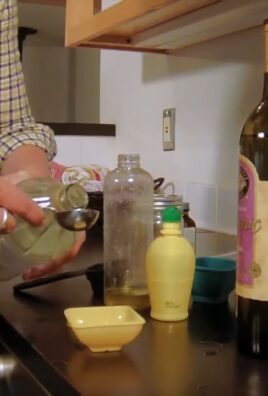
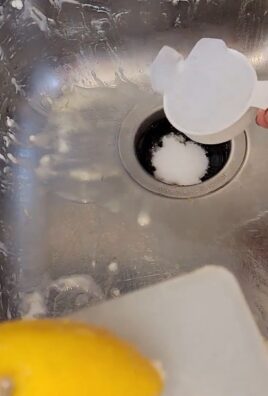
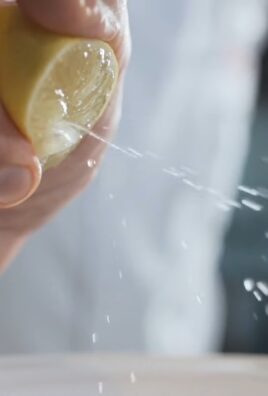
Leave a Comment